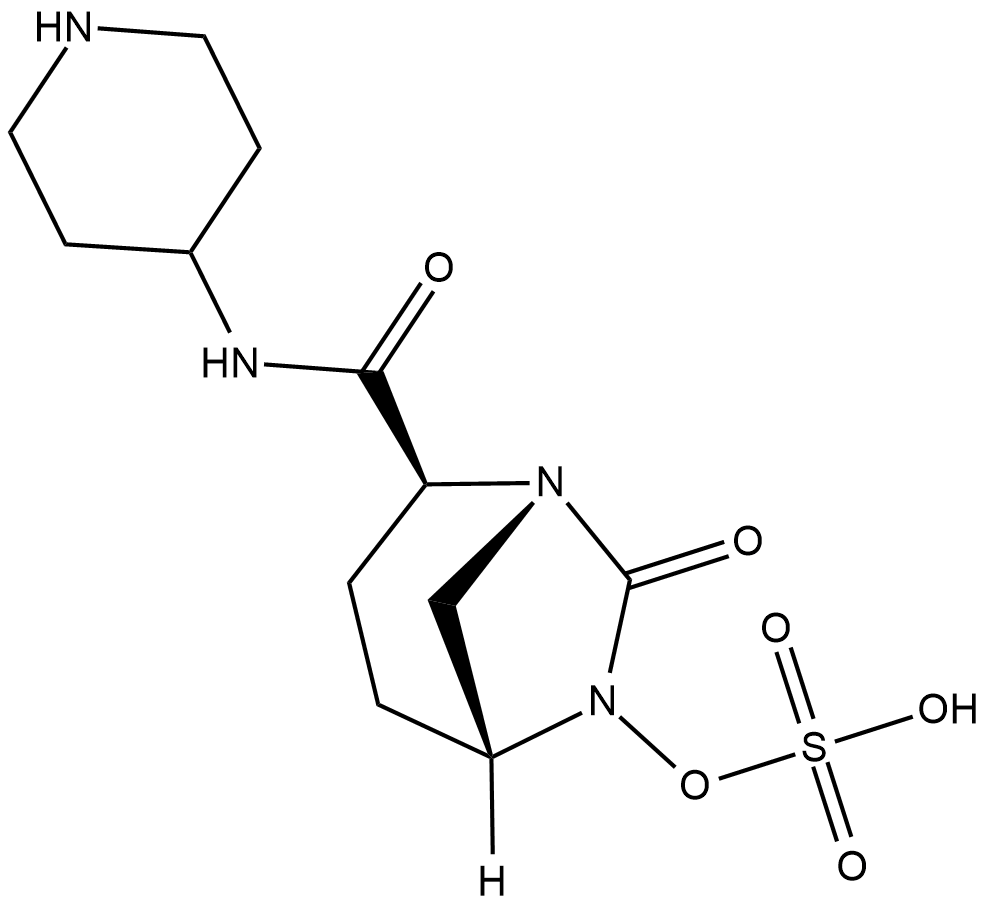Relebactam |
| Catalog No.GC19308 |
A β-lactamase inhibitor
Products are for research use only. Not for human use. We do not sell to patients.

Cas No.: 1174018-99-5
Sample solution is provided at 25 µL, 10mM.
Relebactam is a diazabicyclooctane inhibitor with activity against a wide spectrum of β-lactamases, including class A (extended-spectrum β-lactamases [ESBLs] and KPC) and class C (AmpC) enzymes.Target: beta-lactamaseImipenem with Relebactam is active against Escherichia coli, Klebsiella pneumoniae, and Enterobacter spp., including K. pneumoniae carbapenemase (KPC)-producing isolates. The combination of Imipenem with Relebactam demonstrated activity against KPC-producing Enterobacteriaceae and multidrug-resistant P. aeruginosa. The imipenem MIC50 and MIC90 values for the ESBL-producing isolates were 0.25 and 0.5 ug/ml, respectively; with the addition of Relebactam, the corresponding values were 0.25 and 0.25 ug/ml. Five isolates harbored blaKPC. For these 5 isolates, the imipenem MICs ranged from 0.5 to >32 ug/ml. With the addition of Relebactam, the MICs decreased to 0.12 to 0.5 ug/ml.[1] Relebactam inhibits most class A and class C β-lactamases, with selected inhibition of class D enzymes by avibactam. β-Lactamase inhibitors (BLIs) have played an important role in combatting β-lactam resistance in Gram-negative bacteria, but their effectiveness has diminished with the evolution of diverse and deleterious varieties of β-lactamases.[2]
References:
[1]. Lapuebla A, et al. Activity of Imipenem with Relebactam against Gram-Negative Pathogens from New York City. Antimicrob Agents Chemother. 2015 Aug;59(8):5029-31.
[2]. Bush K. A resurgence of β-lactamase inhibitor combinations effective against multidrug-resistant Gram-negative pathogens. Int J Antimicrob Agents. 2015 Nov;46(5):483-93.
Average Rating: 5 (Based on Reviews and 5 reference(s) in Google Scholar.)
GLPBIO products are for RESEARCH USE ONLY. Please make sure your review or question is research based.
Required fields are marked with *




